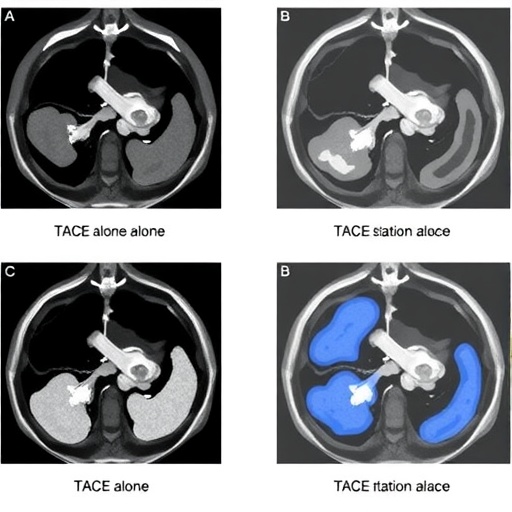The battle against nasopharyngeal carcinoma (NPC), a malignancy prevalent particularly in regions such as Sichuan, China, has long focused on survival and tumor control. However, a groundbreaking study now highlights a critical dimension often overshadowed in cancer care—the long-term impact of NPC treatment on male reproductive health. For the first time, researchers have meticulously explored how therapeutic interventions, notably radiotherapy and chemotherapy, affect fertility, gonadal function, and sexual health in male survivors.
Nasopharyngeal carcinoma exhibits a markedly high incidence in Sichuan, with rates reaching approximately 9.5 per 100,000 individuals. Given its anatomic proximity to the head and neck structures, treatments inevitably expose gonadal function to potential harm. Despite extensive oncological advancements, the consequences of aggressive NPC therapy on testicular reproductive and endocrine parameters remained inadequately understood until now. This new research provides invaluable insight, revealing the nuanced interplay between treatment regimens and male reproductive capacity.
The retrospective study evaluated hormone profiles, seminal characteristics, sexual functioning, and fertility outcomes in a cohort of NPC patients. Measurements were conducted prior to initiating therapy and subsequently at three defined follow-up intervals—immediately post-treatment (T0), three months (T3), six months (T6), and one year (T12) after treatment completion. This longitudinal approach allowed the researchers to map the trajectory of gonadal recovery or persistent dysfunction over time, illuminating critical windows of vulnerability and regeneration.
Interestingly, prior to treatment initiation, a majority of the patients—nearly 80%—demonstrated normozoospermia, indicating normal sperm parameters. Yet, when compared to healthy controls, NPC patients exhibited a noticeable reduction in total sperm count, a factor that could predispose them to subfertility even before therapy commenced. Intriguingly, the biological heterogeneity of NPC, classified into differentiated keratinizing and undifferentiated non-keratinizing types, did not differentially influence sperm concentration, suggesting that intrinsic tumor histology might not directly modulate pre-treatment gonadal function.
Post-therapeutic assessments painted a more somber picture. Treatment regimens, notably chemotherapy combined with radiotherapy tailored to individual patient profiles, led to significant reductions in total sperm counts immediately after therapy and persisted through the three- and six-month milestones. This decline underscores the profound gonadotoxicity exerted by cancer treatments affecting spermatogenesis and endocrine balance. Yet, a beacon of hope emerged as sperm parameters began to rebound by the 12-month mark, hinting at the remarkable resilience and regenerative capacity of the male reproductive system post-insult.
Sexual function, another crucial aspect of men’s health, was also rigorously evaluated. While the majority of sexual domains remained unaffected by treatment, certain facets—specifically drive, erectile function, and ejaculation—suffered mild to moderate impairment. These findings are pivotal, as they highlight the multifaceted nature of survivorship challenges; beyond fertility, quality of life involving sexual well-being merits attentive discussion and tailored support from oncologists.
To quantify real-world fertility outcomes, the study tracked fatherhood desires and achievements in a subset of 44 patients. Among them, seven expressed the wish to have children following treatment, with six successfully achieving paternity. Fertility was attained both via spontaneous conception and assisted reproductive technology, underscoring the feasibility of fatherhood post-NPC treatment with appropriate interventions and counseling. This blend of natural and assisted reproductive success reaffirms the importance of proactive fertility preservation and monitoring strategies.
At the heart of these results lies a compelling call to action for oncology teams worldwide. The pronounced risk of azoospermia or oligospermia induced by chemotherapy demands early and informed discussions around fertility preservation. Semen cryopreservation prior to commencement of cancer therapy emerges as a non-negotiable strategy, ensuring patients maintain the possibility of biological fatherhood despite the gonadotoxic nature of their treatments.
Delving deeper, the hormonal milieu regulates gonadal function and recovery. Though the current study did not detail endocrine profiles exhaustively in the abstract, the interplay between testosterone production, gonadotropin levels, and spermatogenesis undoubtedly shapes recovery trajectories. Future comprehensive investigations should integrate endocrine assessments to elucidate mechanisms underpinning gonadal resilience or failure in NPC survivors.
From a mechanistic standpoint, radiotherapy targeting the nasopharynx might inadvertently affect testicular function via scatter radiation, adding a layer of complexity to gonadal injury. Chemotherapeutic agents, known for their cytotoxicity, disrupt rapidly dividing spermatogonia, thereby transiently halting or impairing sperm production. Understanding these modalities’ specific impacts can pave the way for refining treatment protocols, balancing oncological efficacy with fertility preservation.
Moreover, this pioneering research emphasizes a holistic approach to cancer survivorship that transcends tumor eradication. Psychosocial ramifications stemming from impaired sexual function and fertility disruptions necessitate integrated care involving oncology, reproductive medicine, and mental health professionals. Patient education about potential side effects and available interventions is paramount in mitigating long-term adverse outcomes.
In the broader context, these findings may reverberate across other malignancies involving head and neck radiotherapy, offering a blueprint for fertility risk assessment and management. Integrating fertility preservation into standard NPC care pathways could serve as a model for multidisciplinary collaboration, enhancing survivorship care quality globally.
This study, published in a leading cancer research journal, marks a significant milestone in understanding NPC’s reproductive sequelae. It sparks essential conversations about personalized treatment designs that factor in life beyond cancer, reinforcing the vital role of fertility preservation as a standard of care.
As advances continue in therapeutic techniques and supportive care, longitudinal follow-up studies will be crucial to monitor long-term fertility and sexual health trajectories in NPC survivors. Such data will refine prognostic counseling and guide innovations to minimize treatment-induced gonadal dysfunction.
Ultimately, this seminal research empowers patients and clinicians alike with knowledge and practical tools to navigate fertility challenges posed by nasopharyngeal carcinoma treatments. It is a critical step forward in ensuring that conquering cancer does not come at the cost of fundamental aspects of quality of life.
Subject of Research: Fertility, gonadal function, and sexual function in male survivors of nasopharyngeal carcinoma patients undergoing radiotherapy and chemotherapy.
Article Title: Fertility, gonadal and sexual function in survivors of nasopharyngeal carcinoma patients
Article References:
Liu, X., Luo, X., Xian, Y. et al. Fertility, gonadal and sexual function in survivors of nasopharyngeal carcinoma patients. BMC Cancer 25, 1583 (2025). https://doi.org/10.1186/s12885-025-14838-x
Image Credits: Scienmag.com
DOI: https://doi.org/10.1186/s12885-025-14838-x
Tags: chemotherapy and sexual health in cancer survivorsevaluating fertility outcomesFertility issues in nasopharyngeal carcinoma survivorshormone levels in nasopharyngeal cancer patientsimpact of radiotherapy on gonadal functionlong-term effects of cancer treatments on male reproductive healthmale reproductive health post-cancer therapyNPC incidence rates in Sichuan Chinaretrospective study on NPC treatment outcomesseminal quality and fertility after NPC treatmentsexual functioning in cancer survivorstesticular function post-radiotherapy





